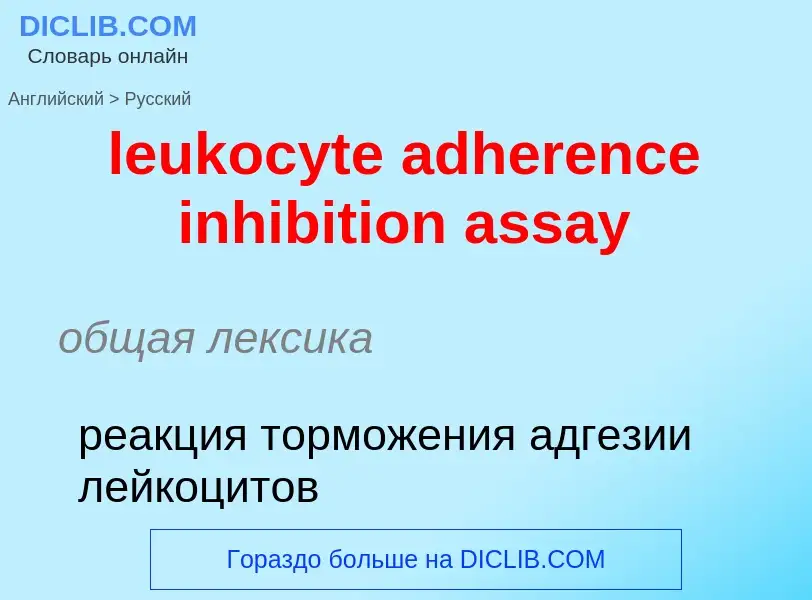Traduzione e analisi delle parole tramite l'intelligenza artificiale ChatGPT
In questa pagina puoi ottenere un'analisi dettagliata di una parola o frase, prodotta utilizzando la migliore tecnologia di intelligenza artificiale fino ad oggi:
- come viene usata la parola
- frequenza di utilizzo
- è usato più spesso nel discorso orale o scritto
- opzioni di traduzione delle parole
- esempi di utilizzo (varie frasi con traduzione)
- etimologia
leukocyte adherence inhibition assay - traduzione in russo
общая лексика
реакция торможения адгезии лейкоцитов
общая лексика
биологическая проба
биопроба
медицина
биологический анализ
[ə'seiiŋ]
существительное
общая лексика
опробование
определение металла в руде
пробирное искусство
химия
количественный анализ
Definizione
Wikipedia

The hemagglutination assay or haemagglutination assay (HA) and the hemagglutination inhibition assay (HI or HAI) were developed in 1941–42 by American virologist George Hirst as methods for quantifying the relative concentration of viruses, bacteria, or antibodies.
HA and HI apply the process of hemagglutination, in which sialic acid receptors on the surface of red blood cells (RBCs) bind to the hemagglutinin glycoprotein found on the surface of influenza virus (and several other viruses) and create a network, or lattice structure, of interconnected RBCs and virus particles. The agglutinated lattice maintains the RBCs in a suspended distribution, typically viewed as a diffuse reddish solution. The formation of the lattice depends on the concentrations of the virus and RBCs, and when the relative virus concentration is too low, the RBCs are not constrained by the lattice and settle to the bottom of the well. Hemagglutination is observed in the presence of staphylococci, vibrios, and other bacterial species, similar to the mechanism viruses use to cause agglutination of erythrocytes. The RBCs used in HA and HI assays are typically from chickens, turkeys, horses, guinea pigs, or humans depending on the selectivity of the targeted virus or bacterium and the associated surface receptors on the RBC.


![serum]] samples diluted from the left to the right. Seropositivity was suspected in Sample 179 serum]] samples diluted from the left to the right. Seropositivity was suspected in Sample 179](https://commons.wikimedia.org/wiki/Special:FilePath/İndirekt Hemaglütinasyon Deneyi.jpg?width=200)
